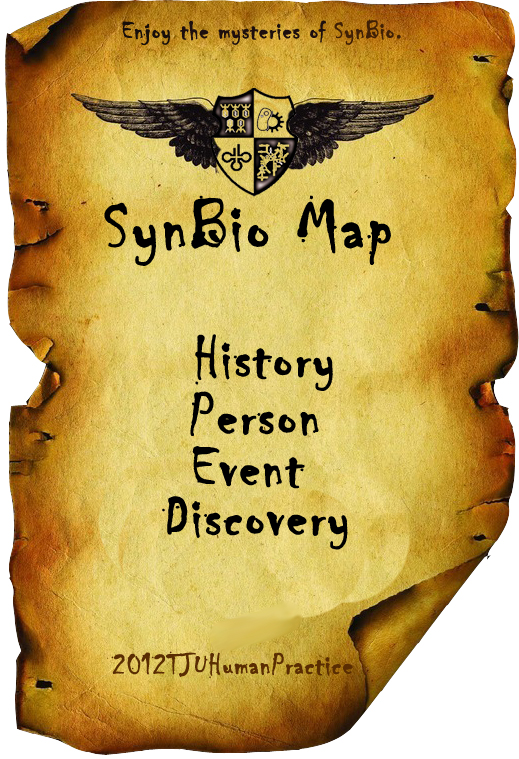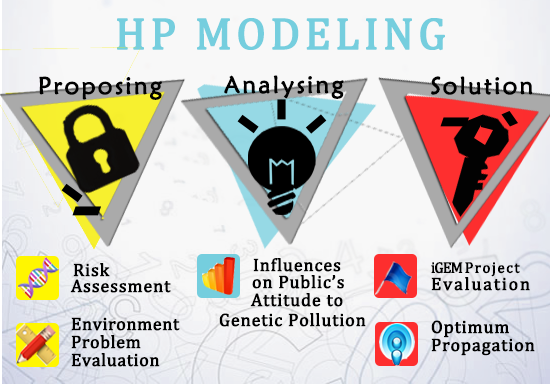Team:Tianjin/HumanPractice/Map
From 2012.igem.org
| Line 63: | Line 63: | ||
<div class="menu_children"> | <div class="menu_children"> | ||
<a href="https://2012.igem.org/Team:Tianjin/HumanPractice/CHNMuseum">SynBio Museum of China</a> | <a href="https://2012.igem.org/Team:Tianjin/HumanPractice/CHNMuseum">SynBio Museum of China</a> | ||
| + | </div> | ||
| + | <div class="menu_children"> | ||
| + | <a href="https://2012.igem.org/Team:Tianjin/HumanPractice/Handbook">Handbook & Summary</a> | ||
</div> | </div> | ||
<div class="menu_children"> | <div class="menu_children"> | ||
Revision as of 03:33, 27 September 2012

MAP
A novel discipline always needs effort to be spread out, a simple and clear way, of course, is necessary. Textbooks? Papers and Thesis? They may not be accepted by the busy public. A brief picture is much more effective and meaningful than a manual book. By collecting the great achievement and famous scientists in the Synthetic Biology map, it's simple enough for you to know the key point of SynBio from 1980s, when it was proposed, to now. Nothing can raise your desire but our Map. Who defined synthetic biology? What's its first achievement? What trouble did it caused? Come on and take a look at the moment that you have lost in Synthetic Biology.
Download at http://zhan.renren.com/tjuigem2012?from=rrhome
Human Practice Modeling
Gene Contamination has been proposed as a potential hazard by Chinese specialist. Transgenic suffered from 3 aspects of nondeterminacy, the chain reactor after the altered of life structure, the potential risk of the food chain and the transgenic contamination, propagation, proliferation, and clear. Until the beginning of the 21st century, transgenic contamination has occurred in many countries world widely, such as Starlink Corn in America, transgenic canola in Canada and corn transgenic contamination in Mexico. All of these facts prove that the hazard of transgenic contamination could not be regarded. But for the limitation of the statistics, many prediction and analysis couldn’t be conducted. In our modeling process, we start from the most fundamental problem, trying to construct a right stream of proposing, analyzing and solving problem from detail to macroscopy. Two models concerning proposing problem predicted the hazard of genetic contamination. The analyzing model focused on a variety factors relating with the attitudes of four major group in society, government, industry, public and institutes. The solving model emphasized on two hands, one is the effectiveness of our project and, on the other hand, the publicizing strategy referring to the necessity of the mastery of the genetic safety knowledge. What's more, parts of our modeling can be adapted to most of the similar issues, which is a acceptable reference for the followup teams.
CONTINUES on Modeling page
Reference
- Pearson, K. (1901). "On Lines and Planes of Closest Fit to Systems of Points in Space" (PDF). Philosophical Magazine 2 (6): 559–572.
- Abdi. H., & Williams, L.J. (2010). "Principal component analysis.". Wiley Interdisciplinary Reviews: Computational Statistics, 2: 433–459.
- Shaw P.J.A. (2003) Multivariate statistics for the Environmental Sciences, Hod-der-Arnold. ISBN 0-340-80763-6.[page needed]
- Saaty, Thomas L.; Peniwati, Kirti (2008). Group Decision Making: Drawing out and Rec-onciling Differences. Pittsburgh, Pennsylvania: RWS Publica-tions. ISBN 978-1-888603-08-8.
- Saaty, Thomas L. (2008-06). "Relative Measurement and its Generalization in Decision Making: Why Pairwise Comparisons are Central in Mathematics for the Measurement of Intangible Factors - The Analytic Hierarchy/Network Process". RACSAM (Review of the Royal spanish Academy of Sciences, Series A, Mathematics) 102 (2): 251–318. Retrieved 2008-12-22.
- Bhushan, Navneet; Kanwal Rai (January 2004). Strategic Decision Making: Applying the Analytic Hierarchy Process. London: Springer-Verlag. ISBN 1-85233-756-7.
- Forman, Ernest H.; Saul I. Gass (2001-07). "The analytical hierarchy process—an exposi-tion". Operations Research 49 (4): 469–487. doi:10.1287/opre.49.4.469.11231.
- http://www.fon.hum.uva.nl/praat/manual/Principal_component_analysis.html
 "
"





















